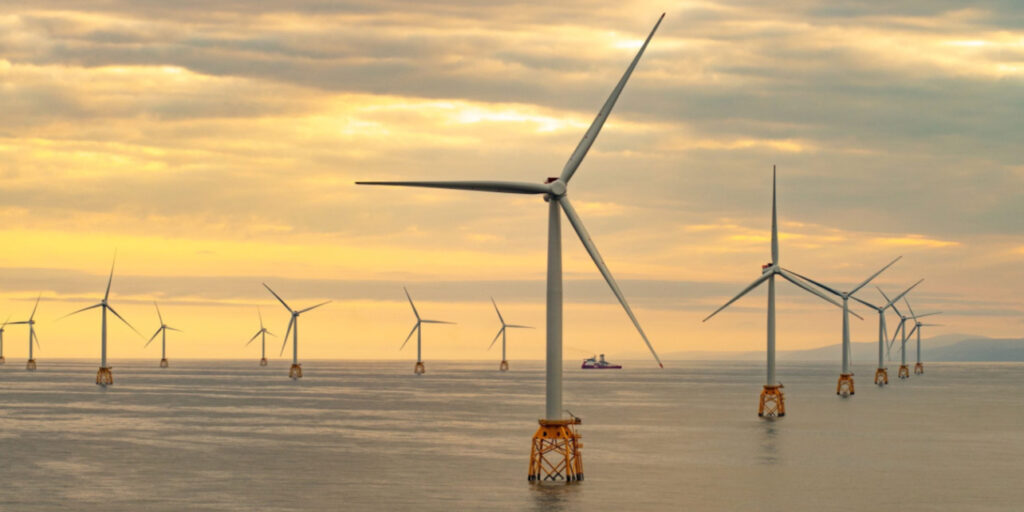The UK is poised for a record-breaking year in wind power, but not in the way many would hope. Despite surging capacity and blustery conditions in 2024, a significant portion of the country’s renewable energy is going to waste due to grid limitations.
This inefficiency is not only a setback for Britain’s ambitions to decarbonise its power network by 2030 but also a contributing factor to rising energy bills.
Central to the UK’s net-zero ambitions is the rapid expansion of renewable energy, particularly offshore wind.
Over the past five years, the country has increased its offshore wind capacity by 50%, with plans to double it by 2029, according to BloombergNEF. However, the grid’s capacity has not kept pace with this growth.
The mismatch is forcing National Grid to pay wind farms—mainly in Scotland—to halt operations when the grid cannot handle the surplus electricity.
These so-called “congestion costs” have already surpassed £1 billion this year, a cost ultimately passed on to consumers.
In addition, grid operators must rely on gas-fired power stations closer to demand centres to maintain supply, undermining efforts to cut emissions.
Last month’s Storm Bert highlighted the issue starkly. Some of the UK’s largest and newest wind farms, including the £3 billion Seagreen project and SSE’s Viking development in the Shetland Islands, were forced to shut down.
SSE, which plans to develop an even larger wind farm off the Scottish coast, warned that without significant upgrades to grid infrastructure, such bottlenecks would worsen.
The utility emphasised that harnessing Scotland’s renewable resources is essential for meeting the UK’s energy security goals. “Transmission infrastructure is key,” the company stated.
The UK’s energy market exacerbates the problem. Generators typically sell electricity in advance, without considering real-time grid constraints.
When the system is overloaded, National Grid must intervene, compensating some wind farms to reduce output while paying others—often gas-fired plants—to increase production nearer to population centres.
Critics argue that this approach is both inefficient and costly. Clem Cowton, director of external affairs at Octopus Energy, called the situation “absurd,” noting, “We’re paying Scottish wind farms to turn off while simultaneously paying gas power stations in the south to turn on.”
Curtailing wind generation has become increasingly frequent, with this year’s congestion costs already surpassing 2023 figures and second only to 2022, when energy prices spiked.
As the UK pushes forward with its renewable energy targets, addressing grid limitations will be crucial to maximising the benefits of its growing wind power capacity and keeping consumer costs in check.


